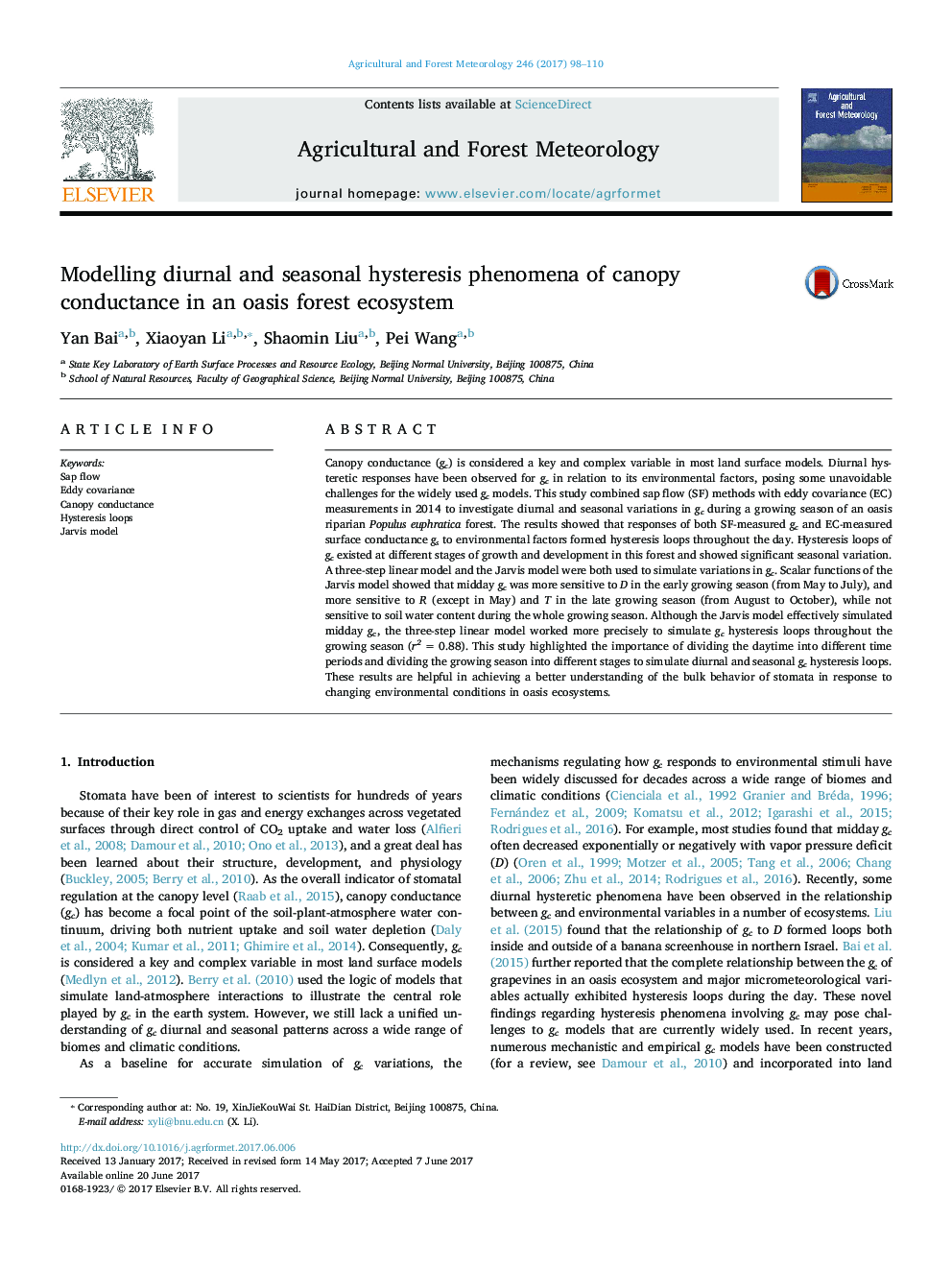| کد مقاله | کد نشریه | سال انتشار | مقاله انگلیسی | نسخه تمام متن |
|---|---|---|---|---|
| 6457697 | 1420855 | 2017 | 13 صفحه PDF | دانلود رایگان |
- Hysteresis loops of SF-measured gc and EC-measured gs were compared.
- Responses of gc to influencing factors were different in each period of the day.
- Responses of gc to influencing factors showed significant seasonal variation.
- The Jarvis model works well to simulate midday gc during the growing season.
- The three-step model worked more precisely to simulate gc hysteresis loops.
Canopy conductance (gc) is considered a key and complex variable in most land surface models. Diurnal hysteretic responses have been observed for gc in relation to its environmental factors, posing some unavoidable challenges for the widely used gc models. This study combined sap flow (SF) methods with eddy covariance (EC) measurements in 2014 to investigate diurnal and seasonal variations in gc during a growing season of an oasis riparian Populus euphratica forest. The results showed that responses of both SF-measured gc and EC-measured surface conductance gs to environmental factors formed hysteresis loops throughout the day. Hysteresis loops of gc existed at different stages of growth and development in this forest and showed significant seasonal variation. A three-step linear model and the Jarvis model were both used to simulate variations in gc. Scalar functions of the Jarvis model showed that midday gc was more sensitive to D in the early growing season (from May to July), and more sensitive to R (except in May) and T in the late growing season (from August to October), while not sensitive to soil water content during the whole growing season. Although the Jarvis model effectively simulated midday gc, the three-step linear model worked more precisely to simulate gc hysteresis loops throughout the growing season (r2Â =Â 0.88). This study highlighted the importance of dividing the daytime into different time periods and dividing the growing season into different stages to simulate diurnal and seasonal gc hysteresis loops. These results are helpful in achieving a better understanding of the bulk behavior of stomata in response to changing environmental conditions in oasis ecosystems.
We found that responses of both Sap flow-measured canopy conductance (gc) and Eddy covariance-measured surface conductance (gs) to environmental factors formed hysteresis loops throughout the day, and gc loops existed at different stages of growth and development in the P. euphratica forest and showed significant seasonal variation.194
Journal: Agricultural and Forest Meteorology - Volume 246, 15 November 2017, Pages 98-110
